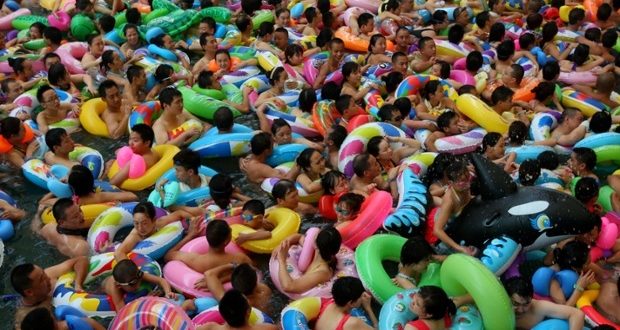Environment groups have a problem with population
Published on March 7th, 2014
Jonathon Porritt
March 7 2014
The Guardian
It doesn’t take too long to open up incredibly divisive discussions about population, development and the environment. For instance, how would you respond to the following facts?
25 years ago, at the time of the ‘Feed the World’ campaign, the population of Ethiopia was around 33m. Today, it’s nearly 80m, partly as a consequence of Western aid successfully preventing the death of millions of people who would otherwise not have survived periods of chronic drought. By 2050, on a ‘business as usual’ projection, Ethiopia’s population will be around 175m, many of whom will be as vulnerable to serous drought as they were when we were all being exhorted “to feed the world”.
The facts themselves are not really the source of the controversy. The tone with which they are communicated, and the interpretation of those facts, is where the controversy kicks in.
To assert as bluntly as some demographers do that it is next to useless to go on pumping further aid into countries like Ethiopia until they have got on top of their unsustainable population growth, is hateful to most development NGOs.
To assert further that Ethiopia is not a humanitarian disaster, but “an evolutionary and demographic disaster” (attributable primarily to too many people trying to live on arid, drought-prone land in the Great Rift Valley) marks you down automatically as a heartless fascist.
It’s pretty much the same story when direct connections are made between the continuing assault on biodiversity in countries all around the world, and unsustainably high levels of population growth. Despite all the evidence from the IUCN that growth in human numbers is one of the principal drivers behind continuing encroachment on pristine areas of high biological value, conservation and environment groups tip toe around this incontrovertible physical reality as if it was an still unproven hypothesis.
Then bring it closer to home. In all the angst-ridden coverage of the recent floods in Somerset and the Thames Valley, did you hear a single representative of any of the UK’s leading environmental organisations make the connection between the floods and the UK’s still rising population? No, you did not.
Yet they all know that this is a key part of the story, and that the UK’s population is set to grow by around another 10 million people over the next 25 years. A significant percentage of those millions will end up housed in the South East, further exacerbating already chronic overheating effects – including the need to build millions of new homes, many of which (despite the strangulated complaints of the poor old Environment Agency) will continue to be built on flood plains.
It was ever thus.
The only time when environmental NGOs (in both Europe and the USA) were actively involved in the population debate was back in the early 1970s. With Paul Ehrlich’s Population Bomb going off all over the place, and books like Limits to Growth eloquently stressing the linkage between population growth, resource consumption and environmental impact, it made good PR sense for the NGOs to be vocal on those issues.
But as soon as that level of mainstream political interest faded away, the NGOs’ interest in population faded away too. As director of Friends of the Earth in the UK between 1984 and 1990, I failed completely to get the organisation to say anything intelligent about population, let alone campaign on it – and I still feel bad about that.
So when the charity Population Matters (of which I’m a patron) invited my good friend Robin Maynard to conduct a survey of where the eight leading NGOs in the UK are now positioned on population, I wasn’t exactly holding my breath.
The subsequent decision to rank them – based on their responses to some simple suggestions as to what they might actually do on population issues – was the direct consequence of the really rather pathetic responses our enquiries elicited. This was the end result, with first place being best and eighth worst:
- Friends of the Earth
- The Wildlife Trusts
- CPRE
- Greenpeace
- RSPB
- Wildfowl and Wetland Trust
- National Trust
- WWF-UK
Given that about 80% of people here in the UK believe population growth to be an important issue, you do wonder what the problem with today’s NGO leaders might be – apart from collective blindness and an understandable but gutless desire to avoid controversy.





